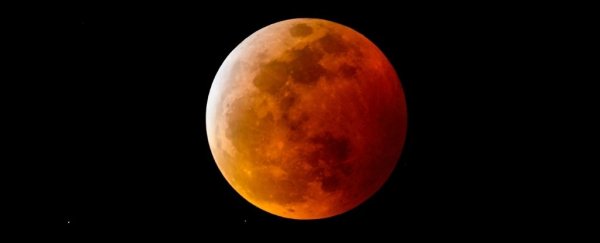As the full Moon rises, so too does the Northern black swift (Cypseloides niger borealis). When this little bird migrates from the Rocky Mountains to the Amazon rainforest, researchers have found it uses moonlight to regain its energy.
In periods around the full moon, tiny trackers and sensors attached to Northern swifts show them regularly rising to extreme heights, sometimes up to 5,000 meters above sea level.
Based on their increased flapping, researchers suspect the ascending birds are feasting on aerial insects, which are easier to hunt in the light of the moon.
One night, during the eight-month migration, a total lunar eclipse saw the birds lose altitude rapidly, indicating an immediate influence of moonlight on their flight.
While previous studies have shown a similar rise and fall of flying insects with the Moon, this is the first time the lunar cycle has been tied to a bird's altitude.
"The dynamics of the high-altitude flight in relation to the different phases of the moon came as a total surprise to us," says biologist Anders Hedenström from Lund University in Sweden.
"We discovered that the black swift does not land a single time during their eight and a half month long migration, so they stay in the air the entire time."
Researchers still aren't sure if it's the light of the moon that causes swifts to increase their altitude or if there's some other factor at play. What they do know is that as the nights become darker, black swifts drop lower in the sky and decrease their activity levels.
There's always a chance the birds are flying higher when the night is brighter to avoid predators, not to eat, but the authors note that flying to altitudes of 2,000 meters above sea level on average seems like an "unnecessarily wide safety margin", especially on such a long trip, when saving energy is key.
During darker nights, like those around the new moon, the swifts flew roughly 700 meters above sea level on average.
"We therefore argue that predator avoidance is an unlikely driver for the periodic moon-related altitudinal shifts by swifts," the authors conclude.
"Prey capture, which involves accelerations and maneuvering by flapping flight, likely increases the activity level as recognized by the multisensor data loggers."
The effect of the Moon cycle on animal behavior is known as the 'lunar effect', and it impacts a wide variety of creatures, including oysters, corals, zooplankton, sharks, seabirds and lions.
Many of their behaviors are tied to the light of the Moon, and some, to the tides. But others are a complete mystery.
Shark attacks, for instance, seem to increase around the full Moon, and yet most of these attacks happen in broad daylight when humans usually swim.
There's still so much we don't know about how Earth's nearest neighbor impacts life on our planet.
Bird migration has been tied to the lunar cycle before, but never in regards to altitude. European nightjars, for instance, take cues from the Moon when beginning their migration.
These birds are also twice as active when migrating on moonlit nights when they are hunting for insects.
Now, it seems like the Northern black swift might do something similar. For all we know, this could be a relatively common lunar effect.
The study was published in Current Biology.
